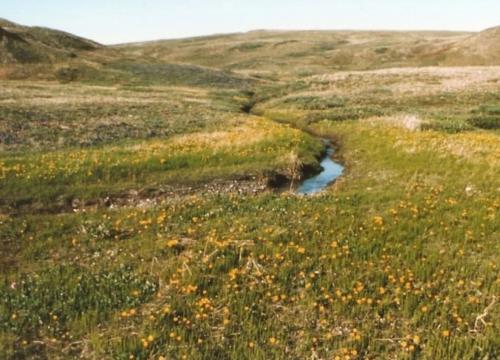In this webinar, Dr. Amy Butler talked about the Polar Vortex. She focused on why she became an atmospheric scientist, presented a brief overview of the stratosphere and the ozone layer, and discussed how we might use information about the stratospheric polar vortex to make extended-range weather forecasts.
This webinar is part of the CIRES/NOAA Science-At-Home series.
Goals Header
About the Presenter
Dr. Amy Butler is a CIRES research scientist in the Chemical Sciences Laboratory at NOAA. Her interest in atmospheric sciences started out as a strong fear of tornadoes, but evolved in a passion for weather and climate. Now her research focuses on understanding a layer of the atmosphere miles above the surface called the stratosphere. This is the home of the ozone layer, which protects the earth from dangerous ultra-violet radiation. Dr. Butler investigates how the winds in the polar stratosphere-- the polar vortex-- might improve weather prediction weeks in advance, and how the polar vortex might change in the future.
Additional Learning Resources
Pre-K: How Strong Is Wind/Air? Gather several items from around your house. A cotton ball, a toy car, a leaf, a pebble, a crayon, and any other small item you want to know if wind can move. Now using a straw (or toilet paper tube) blow on the objects. Do they move? How strong do you think air must be to be able to damage a building, like a tornado or hurricane does?
K-5: Fly a Kite - Don't have a kite handy? That's okay because NPR's Science Friday has instructions on how to make a kite from materials you have at home, and if you want to kick it up a notch, instructions on how to add a tail to your kite.
Educators - Need a quick video that defines the differences between weather and climate? Check out this National Geographic video.
Check out the NOAA Science on a Sphere Explorer App, this free mobile app has hundreds of dataset visualizations, like the wind currents, displayed on a globe that you can spin to explore.
6-8: Build an Air Vortex Cannon - Using supplies you might have around the house, like a paper/plastic cup, toilet paper tube, or cardboard box, and instructions from NPR's Science Friday, try to make the best Air Vortex Cannon you can!
Educators - Use teaching guidance from CLEANet.org to come up with ideas for how to use the Climate Prediction Center website to make short term and long term weather predictions. Based on the presentations in this series, how accurate do you think these predictions are? What would make them better?
9-12: Wind Maps – The EarthWindMap by the NullSchool depicts real-time wind speed and direction at selected heights above Earth's surface, ocean surface currents, and ocean surface temperatures and anomalies. This can be paired with the Windy.com maps which have filters for not just wind but other weather conditions. Where is the fastest wind? Is there any relation between the ocean surface currents and wind? How about temperatures?
Educators - Use this online simulation game with your students so they can "see" near-ground level ozone pollution. Teaching guidance can be found on CLEANet.org.
Educators - In this week-long activity that can be done remotely, students can try their hand at climate modeling. Again, guidance is available through CLEANet.org.


